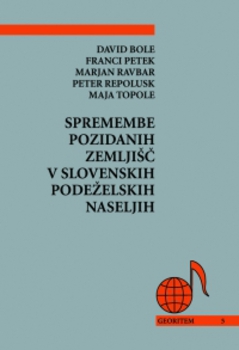Spremembe pozidanih zemljišč v slovenskih podeželskih naseljih
Knjiga obravnava značilnosti pozidave zemljišč v različnih podeželskih naseljih po osamosvojitvi Slovenije. Na novo oblikovana gospodarska in družbena politika je namreč opazno vplivala na poselitvene razmere v državi. Procesi, ki so se začeli že prej, so v tem obdobju postali intenzivnejši, poleg tega so se poglobile razlike med posameznimi območji. Rezultati raziskave, ki so predstavljeni v knjigi, lahko pripomorejo k aktivnejši zemljiški politiki in k boljšemu razumevanju strukture pozidanih zemljišč v slovenskih podeželskih naseljih, pa tudi poznavanju sodobnih teženj njihovega demografskega in gospodarskega razvoja. Za stroko je pomemben predvsem izviren metodološki pristop, ki združuje terensko delo, analizo razpoložljivih statističnih virov in rezultate dveh nizov aerosnemanj. Delo je namenjeno raziskovalcem problematike podeželja Slovenije, urbanistom, prostorskim načrtovalcem in študentom.
Prenosi

Zbirka
Licenca

To delo je licencirano pod Creative Commons Priznanje avtorstva-Nekomercialno-Brez predelav 4.0 mednarodno licenco.
